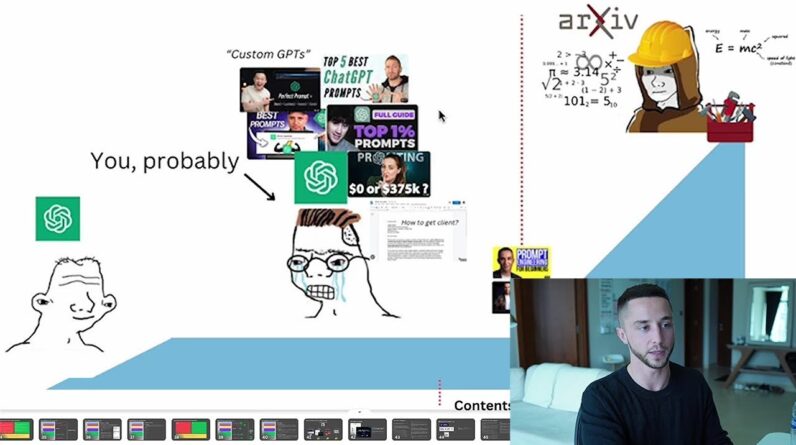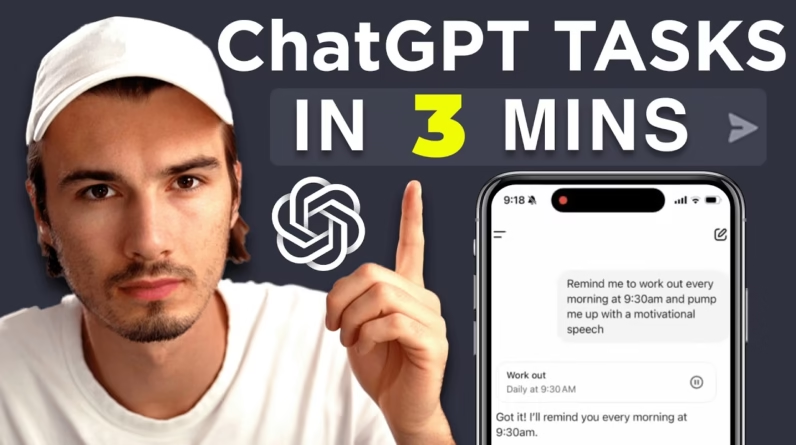
Understanding prompt engineering is essential for anyone looking to excel in AI, and there’s a good chance you might be struggling with it. This article unpacks the nuances behind effective prompting, addressing common pitfalls and offering actionable solutions to elevate your skills. You’ll discover different prompting styles, the significance of clarity, and techniques to ensure you get the best results from AI models.
By the end, you’ll grasp why mastering prompt engineering is crucial for your career or business growth in the AI field. Whether you’re just getting started or find yourself hitting a plateau, this article is designed to provide you with the knowledge and tools needed to unlock your potential and greatly enhance your interactions with AI.
Table of Contents
Understanding Prompt Engineering
Definition of Prompt Engineering
Prompt engineering refers to the process of crafting prompts that help guide AI language models in generating meaningful and relevant output. In simpler terms, it is the art and science of asking the right questions or giving the right commands to AI systems to attain the desired results. You might find this skill essential as it can influence how effectively AI understands and responds to your input. With the increasing integration of AI in various fields, mastering prompt engineering can significantly enhance your interaction quality and the overall usefulness of AI systems.
Importance in AI Interactions
In the rapidly evolving world of artificial intelligence, the importance of prompt engineering cannot be overstated. It acts as a bridge between human intent and machine understanding. In your interactions with AI, well-crafted prompts lead to precise, contextually relevant outputs, which facilitates better decision-making and productivity. Without effective prompting, responses can be vague, irrelevant, or even misleading, hindering progress in tasks that rely on AI support. Therefore, investing time in perfecting your prompting skills is crucial for maximizing the potential of AI interactions.
Comparison with Traditional Programming
When compared to traditional programming, prompt engineering might appear less technical, but it requires a different kind of skillset and understanding. Traditional programming relies on writing specific code and managing syntax to dictate machine behavior. On the other hand, prompt engineering deals with ambiguity and requires a keen sense of language and context. In many ways, it resembles a collaborative dialogue with AI rather than strict command execution. As you delve into prompt engineering, you’ll discover that it often demands creativity and adaptability, especially in recognizing how the AI interprets instructions differently than a person would.
The Bell Curve of Skill Levels
Explaining the Concept of the Bell Curve
The bell curve is a statistical concept that illustrates how qualities or traits are distributed in a population. In the context of prompt engineering, this concept suggests that skill levels vary from the very novice to the expert, with most individuals falling somewhere in the middle. You may find yourself at various points on this curve throughout your learning journey, influencing your ability to interact effectively with AI.
The Naive vs. the Genius: A Unique Overlap
Interestingly, both the naive and the genius in prompt engineering can arrive at effective solutions, albeit through vastly different methods. The naive user often relies on basic templates and improvisation to get satisfactory results. However, the genius user combines a profound understanding of AI workings with a toolkit of refined prompts to yield optimized outputs. You should aspire to bridge the gap by comprehending foundational concepts while honing your craft, ultimately achieving an elevated, genius-level proficiency.
Positioning Yourself on the Curve
Identifying where you stand on the prompt engineering bell curve can provide important insights and guide your growth. Reflect on your experiences with AI systems, the types of prompts you craft, and the outcomes you receive. Are you consistently achieving the results you desire? Or do you find yourself struggling with vague or unhelpful responses? This self-assessment will help you pinpoint areas for improvement and create a targeted action plan for advancing your skills.
Common Missteps in Prompt Engineering
Lack of Specificity in Prompts
One of the most frequent pitfalls in prompt engineering is the lack of specificity in your prompts. General or vague prompts can lead to generic responses from AI that do not address your actual needs. To improve your outcomes, ensure that your prompts contain clear information about what you wish to achieve and eliminate any ambiguity. Think of it as giving directions to a friend—detailed instructions lead to a better outcome.
Ignoring Contextual Information
Context plays a pivotal role in AI interactions, and neglecting it can result in irrelevant or misunderstood outputs. Providing sufficient context helps the AI align its responses with your intent. When crafting prompts, consider what background information might be necessary for the AI to generate relevant responses. For instance, if you’re looking for specific advice or suggestions, include pertinent details about the situation to enhance understanding.
Underestimating the Role of Examples
Examples serve as powerful tools in prompt engineering. They offer the AI a frame of reference, illustrating your expectations for the type of response you’re aiming for. By including examples, you can clarify your request and improve the likelihood of receiving a suitable answer. Don’t underestimate the value of good examples; they can make a significant difference in the quality of AI output.
The Science Behind Effective Prompting
Understanding Language Models and Their Mechanisms
To become skilled at prompt engineering, it helps to grasp the underlying mechanisms of language models. These models rely on patterns in data and learn from vast corpuses of text. They generate responses based on probabilities, assessing what would likely follow your prompt. By comprehending this science, you can craft prompts that resonate well with the model’s learned behaviors, yielding better results.
Principles of Effective Communication with AI
Effective prompting mirrors the principles of good communication. This means being clear, concise, and engaging. Just as good conversations provide clarity and context, well-designed prompts should aim to convey your thoughts in a structured manner. By treating your interactions with AI like a conversation, you can create a more natural and effective dialogue, leading to high-quality outputs.
Cognitive Load and Its Impact on Prompt Design
The cognitive load refers to the amount of information your brain can process at any given time. In prompt engineering, it’s essential to be mindful of cognitive load for both yourself and the AI. Complex prompts packed with too much information may overwhelm the AI, resulting in subpar outputs. Instead, focus on breaking down your requests into manageable components that are easy for both you and the AI to grasp. Simplification can lead to more focused and relevant responses.
Types of Prompting Techniques
Conversational Prompting Explained
Conversational prompting is often the go-to method for many beginners, as it enables a back-and-forth dialogue with AI that feels natural. This technique is forgiving—if your initial prompt doesn’t yield the desired result, you can tweak it through subsequent questions or refinements. While effective for casual use and small tasks, it can lack scalability for more extensive projects or systems.

Single Shot vs. Multi-Turn Prompting
Understanding the difference between single-shot and multi-turn prompting is critical to using AI efficiently. Single-shot prompting involves crafting a prompt that requires a single, task-oriented output without the need for follow-ups. This approach is valuable when building automated systems or workflows where reliability is paramount. In contrast, multi-turn prompting allows for continuous interaction and exploration of ideas, but may not be suitable for situations that demand precise, consistent responses.
Choosing the Right Type for Your Task
When determining which prompting technique to use, consider the nature of your task. If you’re working on an intricate project where repeated refinements are necessary, conversational prompting may be more appropriate. However, if you’re looking for quick, reliable outputs, think about utilizing single-shot prompts. The right choice will ensure that you receive meaningful results tailored to your needs.
Key Components of a Successful Prompt
Defining the Role Assigned to the AI
Clearly defining the role you want the AI to play is essential for effective prompting. By establishing context—whether you need the AI to act as a advisor, assistant, researcher, or writer—you create a framework that guides its responses. When you specify the role, you give the AI vital context that improves its output relevance.
Articulating the Task Clearly
It’s important to articulate the task you want the AI to perform with explicit verbs and expectations. This clarity will enable the AI to focus on the task at hand and understand what you anticipate as output. Avoid ambiguous language that could misconstrue your intentions, leading to irrelevant responses.
Utilizing Contextual Clarity and Specificity
The best prompts contain both contextual clarity and specificity. Think of it as painting a picture: the more detail you provide about your vision, the better the AI can recreate it. By embedding contextual information—such as the background of the topic or specific criteria—you can enhance the quality of the generated output.
Enhancing Prompts with Markdown Formatting
Basics of Markdown for Better Structure
Markdown is a lightweight markup language that includes simple syntax to format text. Using markdown, you can structure your prompts or outputs for better readability. It’s an effective way to organize information and present it clearly, helping both you and the AI navigate through the material. Familiarizing yourself with markdown basics can enhance your overall interaction with AI tools.
Using Markdown for Clarity and Readability
Incorporating markdown formatting can significantly improve the clarity and readability of your prompts. By using headings, bullet points, or numbered lists, you create a well-organized layout that makes it easier for the AI to comprehend your request. This organization reduces confusion and allows the machine to produce more focused and relevant answers.
Impact of Formatting on AI Understanding
The way you format your prompts can directly impact how the AI processes and understands your query. A structured and visually appealing prompt can help the AI identify critical elements more efficiently, leading to a response that more closely meets your expectations. Therefore, investing time in mastering markdown can be a worthwhile endeavor in your prompt engineering journey.
Cost-Effective Prompt Engineering
Choosing the Right Model Based on Budget
When engaging in prompt engineering, it’s crucial for you to be mindful of costs associated with different AI models. Depending on the complexity of your tasks and the capabilities of the AI, various models come with different price tags. Choose a model that aligns with your budget while still meeting your needs for quality and reliability in output. Understanding the options available enables you to make informed decisions that maximize your ROI in AI interactions.
Impact of Input Size on Cost
The size and complexity of the input prompt can have an impact on the cost. Longer, more complex inputs usually require more processing power, which can raise costs. When constructing prompts, keep this in mind and aim for a balance between complexity and cost-effectiveness. By refining your input to be both concise and effective, you can manage expenses while still receiving quality results.
Balancing Quality and Cost in Prompting
Finding the sweet spot where cost meets quality is key to successful prompt engineering. While high-end AI models can provide exceptional output, they also come with a hefty price. Strive for a balance that allows you to achieve your objectives without overspending. Through continual refinement of your prompts and careful selection of models, you’ll enhance the quality of your AI interactions while remaining budget-conscious.
Collaborative Approaches to Prompting
Insights from Industry Experts
Collaboration with industry experts can offer invaluable insights into effective prompt engineering practices. Learning from those who have successfully navigated the challenges of AI interactions can provide you with actionable strategies and ideas for your own prompting methods. Regularly engaging with the AI community, whether through forums or workshops, will keep you informed about new techniques and advancements in the field.
The Importance of Feedback Loops
Establishing feedback loops is vital for your growth in prompt engineering. By reviewing the outputs generated from your prompts and comparing them against your desired outcomes, you can identify areas for improvement. Regularly gathering feedback—whether from colleagues, AI systems, or self-reflection—will empower you to refine your techniques and enhance your overall effectiveness.
Adapting Techniques Based on Collaboration
In collaborative environments, adapting your prompting techniques is often necessary to align with others’ styles and expectations. Being flexible and open to suggestions can lead to improved outcomes that satisfy multiple stakeholders. By sharing experiences and learning from your collaborators, you can adapt your strategies, fostering stronger AI interactions and greater team success.
Concluding Thoughts on Mastering Prompt Engineering
Reflection on the Importance of the Skill
As we’ve established, mastering prompt engineering is essential in harnessing the full potential of AI technologies. Your ability to communicate effectively with these systems can directly determine the success of your projects. Reflect on the journey you’re embarking on and recognize the value of this skill in both personal and professional contexts.
Encouragement to Keep Experimenting
Remember, prompt engineering is as much an art as it is a science. Don’t shy away from experimenting with different techniques and approaches. The more you practice and test the boundaries of AI interactions, the better you’ll become. Embrace the learning process and relish the opportunities to innovate in your prompting strategy.
Final Call to Action for Continuous Improvement
Finally, commit yourself to continuous improvement in your prompt engineering skills. Engage with new resources, seek feedback, and share your experiences with others on similar journeys. By adopting a growth mindset and persistently honing your craft, you’ll position yourself at the forefront of the AI revolution, ultimately leading to a more successful career in this exciting field.







